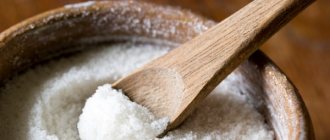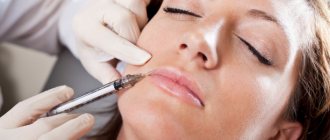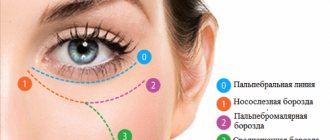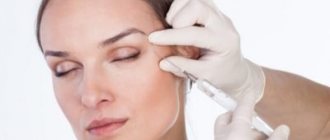Hyaluronic acid is a natural polymer that can be found in many cosmetic products, both for external use (masks, creams, serums, lotions) and injectable forms. HA stabilized with cross-links is the basis of most modern fillers - preparations designed to eliminate wrinkles and folds, increase volume and change the shape of the lips, correct areas of depression and volumetric modeling of the face and body. Unstabilized hyaluronic acid is included in preparations for mesotherapy (biorevitalization), which, when administered intradermally, help moisturize the skin and stimulate metabolic processes, and also ensure a uniform and prolonged supply and distribution of other active ingredients.
When using preparations of unstabilized hyaluronic acid, allergic reactions, persistent inflammatory process (usually signs of inflammation resolve within several hours or days), and angioedema may be observed as adverse events and complications associated with the drug. These reactions are extremely rare, and a thorough medical history is the best way to prevent them.
Side effects from the use of fillers based on stabilized hyaluronic acid are mainly associated with overcorrection, material migration, the formation of areas with a bluish discoloration of the skin when the drug is applied superficially (Tyndall effect), infection and the formation of granulomas as a manifestation of a foreign body reaction. Cases of local necrosis as a result of embolism/compression of blood vessels and a case of pulmonary embolism after injection in the anogenital area have also been described. All of the above side effects are rare, and practicing doctors have been able to verify that hyaluronic fillers (if we are talking about quality drugs) are safe.
One of the most important clinical advantages of fillers based on stabilized hyaluronic acid is the possibility of its accelerated biodegradation under the action of a specific enzyme – hyaluronidase. Complete elimination of the injected material promotes rapid resolution of adverse reactions. Hyaluronidase medications are used in cases of overcorrection, fibrosis and granulomas formed in response to filler injection, as well as for decompression of blood vessels and prevention of necrosis.
Hyaluronidase
Hyaluronidase is an enzyme (more precisely, a group of enzymes) capable of breaking down hyaluronic acid into oligomers (low molecular weight fragments) (Fig. 1). Several types of hyaluronidase have been identified in the human body, both in the cytoplasm of cells and in the extracellular matrix. The coordinated work of these enzymes helps maintain optimal GC balance in connective tissue.
Rice.
1. Hyaluronidase is responsible for the depolymerization of hyaluronic acid, promoting the hydrolysis of the glycosidic bond. Hyaluronidase is synthesized not only in the human body - it is a truly universal enzyme. Most of the functions that hyaluronidases perform are related to their ability to increase tissue permeability by reducing the viscosity of the intercellular matrix. High hyaluronidase activity provides conditions that facilitate the penetration of sperm into the egg. Hyaluronidase is a component of the poisonous secretion of some animals, since by reducing the viscosity of the intercellular matrix of tissues and increasing capillary permeability, it facilitates the spread of toxin from the bite site. This same effect, “seen” in nature, is actively used in medicine when hyaluronidase is introduced into tissues together with drugs, for example, local anesthetics, promoting their distribution in tissues during infiltration anesthesia.
Hyaluronidase in the saliva secretion of leeches contributes to the disruption of the integrity of the vascular wall, resulting in capillary bleeding, and it is blood that leeches feed on. “Digestive” functions are performed by hyaluronidase from the saliva of mammals, as well as secreted by bacteria.
Increased hyaluronidase activity is characteristic of metastatic malignant tumors. Attempts are being made to use drugs that suppress this activity as antitumor agents.
According to the classification compiled by Karl Meyer, hyaluronidases can be divided into types using such characteristics as the source of the enzyme, substrates, conditions, type of reaction catalyzed, and products formed [1].
Type I - testicular type hyaluronidases (hyaluronate-endo-β-N-acetylhexosaminidase). As a rule, they are included in pharmaceutical preparations.
Different subtypes of testicular hyaluronidase are found in the testes and sperm of mammals, and fish milk; in lysosomes of cells of different tissues; in some physiological fluids (blood serum, synovial fluid, etc.), as well as in the saliva and salivary glands of mammals, in bee and snake venoms. The final products of hydrolysis are tetrasaccharides.
Testicular hyaluronidase exhibits enzymatic activity in the pH range of 4.0-7.0.
Type II - leech salivary hyaluronidase (hyaluronate-endo-β-glucuronidase).
Type III - microbial hyaluronidases (hyaluronate lyases; eliminating hyaluronate-endo-β-N-acetylhexosaminidase), which are produced by clostridia, bacteria of the genus Pneumococcus, Streptococcus, Staphylococcus
etc. The end products of the enzymatic reaction are hexa-, tetra- and disaccharides.
Medical preparations of hyaluronidase
In medicine, preparations of testicular hyaluronidase isolated from the testes of cattle are used.
The specific substrate of testicular hyaluronidase is glycosaminoglycans (hyaluronic acid, chondroitin, chondroitin sulfate), which form the basis of the intercellular matrix of connective tissue. As a result of depolymerization under the action of hyaluronidase, glycosaminoglycans lose their viscosity and ability to bind water and metal ions. As a result, the formation of collagen fibers becomes more difficult, the permeability of tissue barriers increases, the movement of fluid in the intercellular space is facilitated, and tissue trophism improves. The clinical consequences of these processes are increased elasticity of connective tissue, reduction of contractures and prevention of their formation, reduction of adhesions, flattening of scars, accelerated resorption of hematomas.
Medical indications for the use of hyaluronidase preparations include burn, traumatic, postoperative scars (keloid, hypertrophic); long-term non-healing wounds and ulcers; stiffness and contractures of joints (after inflammatory processes, injuries), osteoarthritis, ankylosing spondylitis, severe diseases of the lumbar discs; chronic tendovaginitis; scleroderma (skin manifestations); superficial soft tissue hematomas; prevention of the formation of gross scarring of the affected areas of the cornea (in ophthalmology). Hyaluronidase therapy is carried out in preparation for plastic surgery to correct scars.
Another area of application for hyaluronidase drugs is to increase the bioavailability of drugs (antibiotics, cytostatics, antihistamines, radiocontrast compounds, local anesthetics and vaccines) that are administered subcutaneously or intramuscularly.
The widespread use of hyaluronic acid injections in aesthetic medicine has led to the expansion of indications for the use of hyaluronidase: as mentioned above, hyaluronidase is successfully used in the treatment of adverse events and complications of injection plastic surgery, when it is necessary to quickly eliminate the injected drug.
At the same time, we must remember the specificity of this enzyme: there is no point in expecting that hyaluronidase will be able to provide “emergency assistance” when introducing an excessive amount of polylactic acid, collagen, silicone, calcium hydroxyapatite, or in the event of immune reactions to these compounds.
Contraindications for the use of hyaluronidase include individual hypersensitivity, acute inflammatory and infectious diseases, recent hemorrhages, and malignant neoplasms. During pregnancy and breastfeeding, use only for special indications.
Since hyaluronidase improves the absorption of drugs administered subcutaneously or intramuscularly, it should be used with caution in combination with other drugs, as an unpredictable increase in absorption and increased systemic action are possible.
In patients receiving large doses of salicylates, cortisone, ACTH, estrogens or antihistamines, the effectiveness of hyaluronidase may be reduced.
Hyaluronidase is usually available in lyophilized form. The activity of the drug is indicated in international units (IU). Before use, hyaluronidase powder is diluted with sterile saline solution. The preparations do not contain preservatives, therefore they can be used immediately after dilution.
When administered intradermally, hyaluronidase acts for 48 hours.
Contraindications for use
Despite the versatility and positive reviews of hyaluronidase, this product still has side effects and contraindications. Contraindications are mainly related to the occurrence of various allergic manifestations. In addition, the use of this group of enzymes should be abandoned in the following cases:
- the course of inflammatory and infectious processes in the body;
- malignant neoplasms;
- lung pathologies;
- pregnancy and lactation;
- taking medications that are incompatible with the composition of the drug;
- internal hemorrhages.
Reviews and side effects of hyaluronidase must be studied. After all, even in a completely healthy person, such products can cause a negative reaction, in particular, redness of the skin, rashes, spots. This condition is temporary, but with subsequent use of hyaluronidase, special care and attention must be exercised.
With large dosages of the drug introduced into the body, mild fever, dizziness, and small pressure surges may occur. The cosmetologist must warn the patient of such consequences.
Allergy to hyaluronidase
Both at the time of injection and for some time after it, pain may be observed at the site of hyaluronidase injection (therefore, solutions of local anesthetics are sometimes used to dilute hyaluronidase) (Fig. 2). In 25% of patients, local reactions are observed in the form of skin hyperemia and swelling [2]. These reactions resolve spontaneously within 48–72 hours.
Rice.
2. Injection of hyaluronidase: marking the injection area (A), injection of the drug (B) In case of overdose, chills, nausea, vomiting, dizziness, tachycardia, decreased blood pressure, and in extremely rare cases, ventricular fibrillation are observed. In aesthetic medicine, low doses of the drug are used to prevent overdose.
Do not forget that hyaluronidase is a protein drug and therefore has antigenic properties.
A case of the development of anaphylaxis after epidural administration of hyaluronidase has been described [3]. Immediate type (type I) reactions manifest primarily as swelling, rash, pruritus, pain, respiratory depression, nausea, vomiting, and hypotension. As a rule, such symptoms develop after intravascular administration, and have been noted after injections of hyaluronidase and a chemotherapy drug in the treatment of oncological pathology. Clinical symptoms of allergic reactions are effectively treated with injections of corticosteroids, epinephrine and antihistamines. If symptoms of hypotension occur, vasoconstrictor medications should be used immediately.
After repeated intradermal injection of hyaluronidase, a transient delayed allergic reaction (within 24 hours) may occur, and this is a fairly common occurrence. This reaction is manifested by the formation of large, erythematous, edematous papules or blisters, accompanied by itching, but spontaneously resolving within a few days even without treatment. Local application of corticosteroid ointment in the active phase of the process promotes faster recovery. In such cases, repeated injections of hyaluronic acid should be avoided.
In most patients, hypersensitivity develops after at least one previous injection, which predisposes to the development of sensitization and the appearance of clinical symptoms with subsequent injections. However, there is a possibility that any type of allergic reaction may occur during the first injection, which is why an allergy test is required before any hyaluronidase injection.
Intradermal tests, which are accurate and sensitive, play an important role in assessing the possible risk of developing an allergic reaction to hyaluronidase. Carrying out such a test is not difficult: 1500 IU (standard dosage of the enzyme in foreign preparations. - Editor's note) of hyaluronidase is dissolved in 8-10 ml of physiological solution. Then 0.1 ml of solution (in Russian recommendations - 0.02 ml of solution. - Editor's note
) is administered intradermally in the forearm area. The patient is under the supervision of a doctor for an hour. Any reaction (itching, swelling, redness) at the site of hyaluronic acid injection indicates that the patient is contraindicated for treatment with hyaluronidase due to individual hypersensitivity.
Let us analyze the clinical experience of using hyaluronidase in aesthetic medicine.
Drug treatment
Superficial injection of hyaluronic acid can cause the Tyndall effect, which is expressed in small gray-blue hematomas at the injection site. This is especially noticeable in daylight. In this case, there are 2 solutions. Each of them has its pros and cons.
| Treatment options | Advantages | Flaws |
| Natural absorption of fluid |
| It is also necessary to consult a doctor so that he can monitor the condition of the skin. If the condition is not controlled, tissue necrosis may develop. |
| Medication |
|
|
With natural resorption, the treatment time depends on many factors. For example, from the injection site. Usually the drug dissolves faster on the lips, but the area under the eyes has very thin skin, so the time for complete disappearance can reach 2 years.
A more popular method is medication. To get rid of the Tyndall effect, hyaluronidase is usually administered.
Hyaluronidase in the treatment of cellulite and fibrosis after liposuction
Clinical experience in this area of one of the authors of the article (F. Depres) totals about 35 years.
Indeed, hyaluronidase has been used for a long time in the treatment of fibrotic cellulite. To do this, 1500 IU of the enzyme was diluted with 8-10 ml of physiological solution and injected deep under the skin (to a depth of at least 1 cm) in the area of fibrosis. It was recommended to inject no more than 3000 IU of hyaluronidase per procedure; the course of treatment included 1-2 procedures, which were carried out once a week. Currently, hyaluronidase preparations are rarely used in the treatment of cellulite, since more effective complex preparations have been developed, including adipolytic ones based on a complex of sodium deoxycholate with phosphatidylcholine.
According to the authors’ experience, early use of hyaluronidase drugs can reduce fibrosis and post-traumatic swelling after liposuction in the breast area (for gynecomastia in men) and in the submental area (“double” chin). These procedures often lead to severe fibrosis, which is reduced very slowly, sometimes over several years. Timely injections of hyaluronidase can significantly reduce or completely eliminate postoperative fibrosis within a short period of time. A single application of 500 IU of hyaluronidase (1500 IU diluted in 9 ml of saline; 3 ml of solution injected in a fan shape) is sufficient to reduce fibrosis in the submental area. At the end of the procedure, a light massage is performed to better distribute the drug. And already during the massage you can notice a decrease in the density of fibrous formations.
Correction of the consequences of excessive administration of stabilized hyaluronic acid
The use of hyaluronidase eliminates the symptoms of overcorrection or technically incorrect injection of fillers based on stabilized hyaluronic acid, for example, with too superficial injection, migration of the drug, injection of a dense drug into thin skin (Fig. 3).
Rice.
3. Papules after intradermal injection of stabilized hyaluronic acid in the forehead area. The time interval between the injection of hyaluronic acid and hyaluronidase does not play a special role. However, it is necessary to evaluate the volume of the injected solution and the concentration of hyaluronidase in it to remove exactly the excess of exogenous hyaluronic acid. There are no exact standards on this issue, but it is known that some fillers with stabilized hyaluronic acid are less sensitive to hyaluronidase than others [4, 5].
In the case of visualized papules (or strands) of superficially injected drugs, one microinjection (literally “at the tip of the needle”) of hyaluronidase (1500 IU of the drug diluted in 4 ml of saline) directly into the center of the papule quickly eliminates the problem.
Quite often we see the consequences of hypercorrection in the periorbital area, when filler is injected to smooth out crow's feet or reduce the severity of the infraorbital groove. At the same time, visually about or bulging of the drug.
A patient came to us with a characteristic clinical picture of hypercorrection in the infraorbital region (Fig. 4 A). After a hypersensitivity test, hyaluronidase (1500 IU drug diluted in 4 ml of saline) was injected into three points in the lower eyelid (0.1 ml of solution on each side) using a linear-retrograde technique. The drug was injected into the area where the filler was injected, and quite deeply. After such a procedure, small hematomas and transient swelling may be observed.
After the injection of hyaluronidase, the patient must be under the supervision of the attending physician for an hour, after which an examination is carried out and the result is assessed. As a rule, a control examination is carried out on the 3rd day. In the case described above, we observed a return of the tissue to its original state, unfortunately with wrinkles and depression under the eyes (Fig. 4 B). Subsequent reintroduction of stabilized hyaluronic acid may be recommended 2 weeks after hyaluronidase injections. Repeated correction of depression of the infraorbital region should be performed taking into account previous negative experience.
Rice.
4. Visualization of filler injected in excess volume during correction of the infraorbital sulcus (A). Filler based on stabilized hyaluronic acid was introduced 2 years ago. This undesirable phenomenon was corrected using hyaluronidase injections (B). The literature describes cases of overcorrection during volumetric lip surgery [6, 7].
We only encountered such a problem once, while consulting a patient of our colleague. The injection of hyaluronidase quickly corrected the situation without any side effects.
Progress of the procedure
Before injecting an enzyme, the doctor must assess the patient's condition, conduct a visual examination and talk about the presence or absence of any diseases. It is necessary to take a photograph of the surface being treated. The injection is carried out using a needle, and the medication is produced in the form of a powder, which is diluted in a sterile saline solution and used immediately.
Most popular: Let's do Facebook building and look younger without Photoshop
Often hyaluronidase is dissolved with procaine. When mixing the solution, do not allow foam to form and do not shake the glass container. After the solution is prepared, it can be injected into the problem area.
The use of hyaluronidase for the prevention of necrosis
Necrosis that develops as a result of embolism of blood vessels with stabilized hyaluronic acid injected into them is one of the most serious complications of injection plastic surgery. And if earlier we talked about isolated cases of such complications, now, with the rapid growth in popularity of the method, we have to deal with vascular complications more often. And they may not be associated with ignorance of anatomy, but with the atypical location of the vessel in a particular patient.
According to the literature, with early introduction of hyaluronidase into the problem area, it is possible to limit the consequences of ischemia and reduce the risk of necrosis. Unfortunately, injection of hyaluronidase performed 24 hours after the onset of ischemia does not have the desired effect [8-10]. Kim and colleagues conducted a series of experiments: hyaluronic acid was injected into the ear artery of rabbits; then 4 and 24 hours later, hyaluronidase was injected. A late injection did not cause a decrease in the focus of necrosis, while one carried out after 4 hours made it possible to significantly reduce the area of skin necrosis. Thus, in practice, if symptoms of ischemia appear or are suspected in the area of administration of drugs based on hyaluronic acid, it is necessary to immediately inject hyaluronidase into the problem area [10].
Who is to blame and what to do?
The occurrence of problems after contouring is associated with two main factors. 95% of complications and side effects after fillers are due to errors in injection technique. This could be simple failure to comply with the rules of hygiene, treatment of the surgical field (insufficient cleansing of the skin before the procedure), too deep or superficial injection of filler, or exceeding the recommended volume of filler. And only 5% of complications after fillers are associated with defects in the injected material. With the vast number of fillers on the market, there are not many low-quality materials. These include illegally imported drugs or newly introduced products that have not undergone sufficient clinical trials.
Let's figure out what measures the patient can take to avoid these complications.
- Carry out the procedure only in a specialized clinic, where all septic and antiseptic rules are observed and the necessary emergency equipment is available.
- Take the time to make sure your doctor is qualified. Unfortunately, in the practice of a cosmetologist, adverse events are not so rare. And the more often, the more experience a cosmetologist has. This depends not only on the experience of the doctor, but also on the number of different patients. However, when communicating with an experienced specialist, this risk is certainly less. Besides, he knows how to deal with them.
- Pay attention to how carefully the doctor collects anamnesis during the consultation - he is interested in previous and existing diseases, and medications taken. Such a conversation allows you to avoid complications and side effects after fillers. Various autoimmune diseases can cause granulomas, and taking certain medications can lead to immunosuppression.
- When performing contour plastic surgery, only certified drugs should be used. This information must be available in the clinic. Before the procedure, their name and number must be entered into the medical record.
- Strictly follow your doctor's recommendations before and after the procedure.
Tyndall effect
Superficial injections of hyaluronic acid can give the skin a different shade than its natural color, both above and around the area where the filler was injected. In the case shown in Fig. 5 A, the skin in the area of the inner corner of the eye had a clear blue tint. A filler based on stabilized hyaluronic acid was injected into this area several months earlier, the patient spoke of her satisfaction with the result, with the exception of a change in skin color, which became the motivation for corrective therapy. Hyaluronidase was injected very superficially, ensuring that the drug gets exactly into the implantation area. The enzyme (1500 IU) was diluted in 4 ml of physiological solution and after an intradermal allergy test, 0.2 ml was administered in three lines in a retrograde manner. Thus, the total dose of hyaluronidase was 75 IU on each side. In Fig. 5 B shows the result observed 30 minutes after the therapy.
If necessary, it is possible to repeat the enzymatic hydrolysis procedure, but not earlier than after 2-3 weeks.
If the patient expresses a wish for injection plastic surgery, then such a procedure should be prescribed no earlier than 1-3 weeks after the hyaluronidase injection.
Rice. 5. Tyndall effect (A) and its correction with hyaluronidase injections (B)
Will the complication go away on its own?
Unfortunately, this complication will not go away on its own. Biodegradation of the drug (biological breakdown) can take from one to two to three years.
In my experience, there may be cases where the Tyndall effect has been observed for four years in a patient's nasolacrimal trough. This occurs due to the fact that the body encapsulates (creates a protective shell, for isolation, closing something foreign in order to exclude the influence) of a foreign substance introduced to it - filler. In cases of encapsulation, the Tyndall effect will never go away. Therefore, we introduce enzymes to break down the filler.
If an incorrectly injected filler has the property of hydrophilicity (the ability to attract and retain water in the tissues), then we will often observe swelling in the injection area. It will intensify in the morning or evening, especially if the patient eats something salty or spicy.
My advice is that you shouldn’t wait until the filler “dissolves” on its own. He must be removed immediately.
Possibilities of using hyaluronidase in the treatment of granulomas
Despite the high biocompatibility of stabilized hyaluronic acid preparations with integumentary tissues, the risk of developing a reaction to a foreign body cannot be completely eliminated. The frequency of such reactions is certainly related to the quality of the drugs.
A delayed-type hypersensitivity reaction (type IV) also develops in the form of granulomas. Granuloma is an accumulation of mononuclear elements, epithelioid and multinucleated giant cells, formed as a result of a chronic proliferative process, as well as as a reaction to exogenous substances and (or) infection. After administration of hyaluronic acid-based preparations, histiocytes and giant cells of foreign bodies predominate in histological samples.
The formation of granulomas often occurs against the background of distinct symptoms of inflammation (redness, swelling, pain, local hyperthermia), which persist for a long period of time. Over time, granulomas (single or multiple) may naturally resolve or require active treatment, the most radical option of which is to remove the drug that caused the immune reaction.
A patient came to us for a consultation who had undergone volumetric correction of the zygomatic area with a filler based on stabilized hyaluronic acid with a good aesthetic result without adverse events or complications. 2 months after injection plastic surgery, she was prescribed a radiofrequency lifting procedure, which involves deep heating of the skin. A week after radiothermal exposure, an inflammatory reaction developed with severe swelling, limited infiltration in the zygomatic region, painful on palpation (Fig. 6 A). Clinical diagnosis - foreign body granuloma (such a diagnosis can only be presumptive. Histological confirmation is required for its verification. - Editor's note
). After three consecutive injections of hyaluronidase, the patient’s appearance was completely restored, and the symptoms of inflammation were relieved (Fig. 6 B). There were no relapses of granuloma formation.
Rice. 6. Granuloma after administration of a drug based on stabilized hyaluronic acid and subsequent local thermal exposure in the same area (A). Result of treatment with three injections of hyaluronidase (B)
What are the ways to remove filler?
To quickly remove hyaluronic acid in the correction area, metabolic processes are enhanced:
- enzymes: hyaluronidase, lidase, longidase), dietary supplements;
- physiotherapy: microcurrents (to improve blood circulation at the site), darsonvalization, which improves lymph and blood flow, electroporation with cell activators (means that increase the permeability of cell membranes);
- intensive sports and fitness activities;
- frequent visits to saunas , steam baths, warm compresses on the nasolabium and even hot drinks.
Most often, doctors recommend getting rid of gel in the nasolabial fold:
- in the presence of pronounced hypercorrection , injecting the enzyme hyaluronidase or longidase. The drugs dissolve the gel within 2-3 days and are removed completely or partially;
- non-injection method - carrying out a painless course (2-10 procedures) of electrophoresis with the drug Lidaza. You can inject it inside the skin, but then the patient will feel pain;
- long-term use of ultrasound sessions for gradual partial or complete removal of filler.










